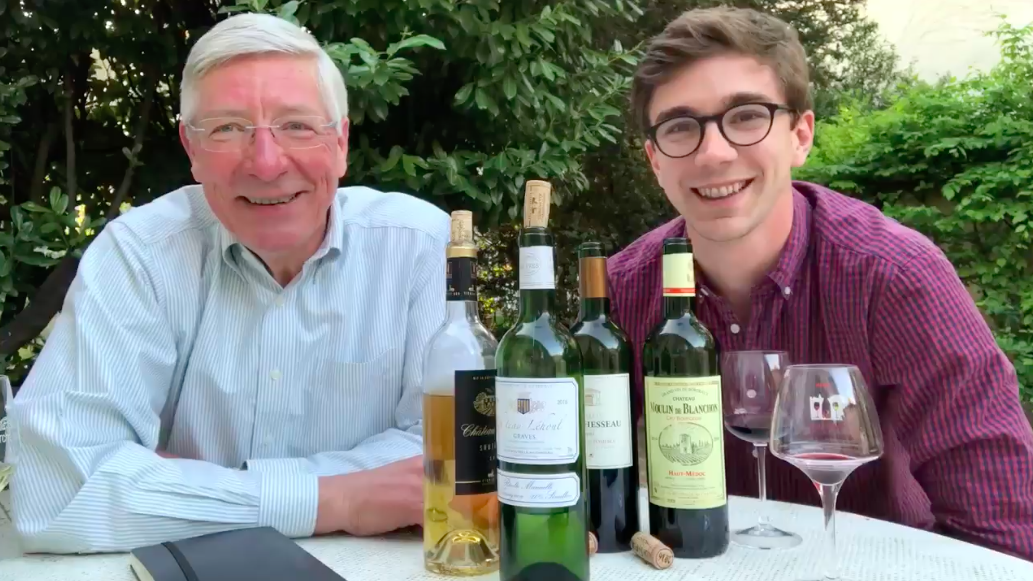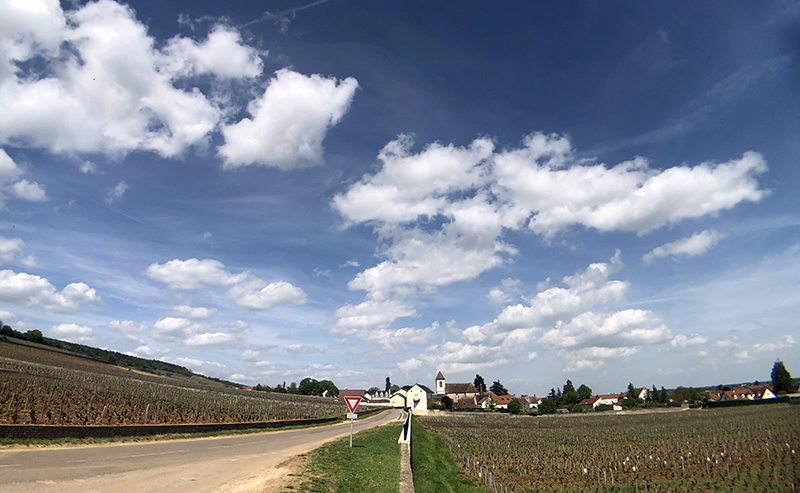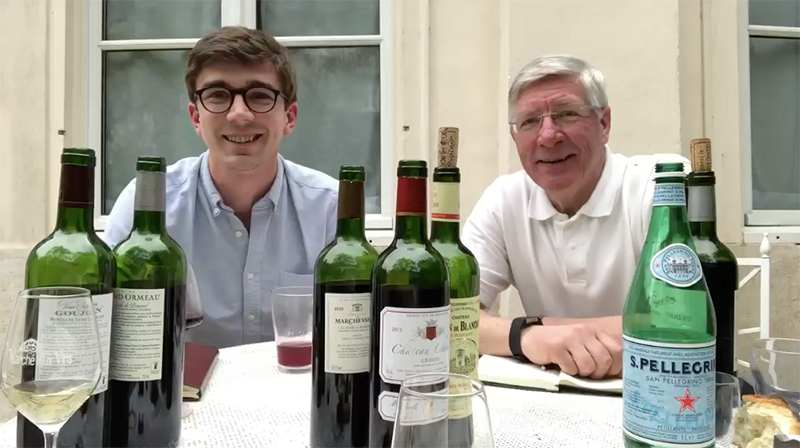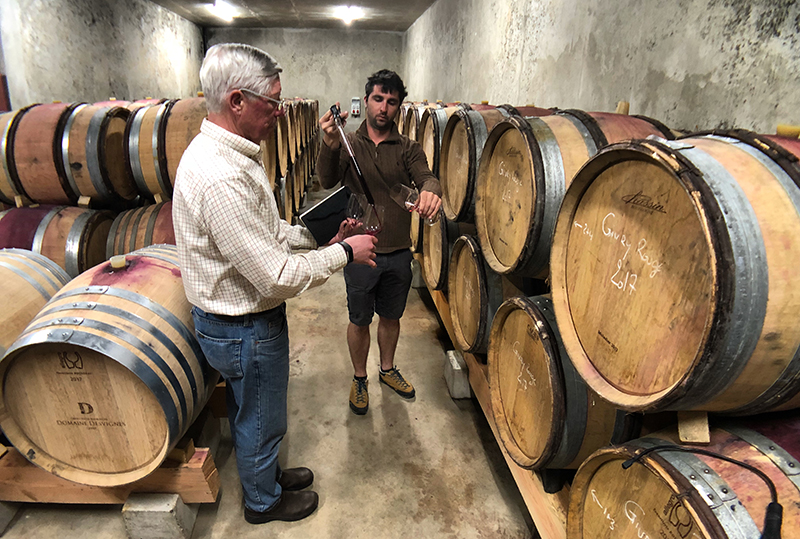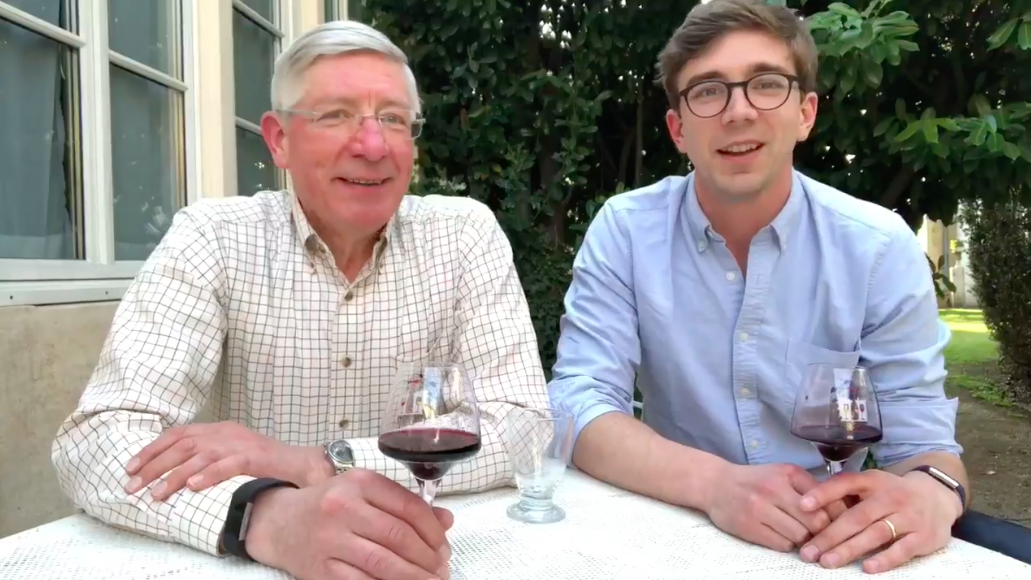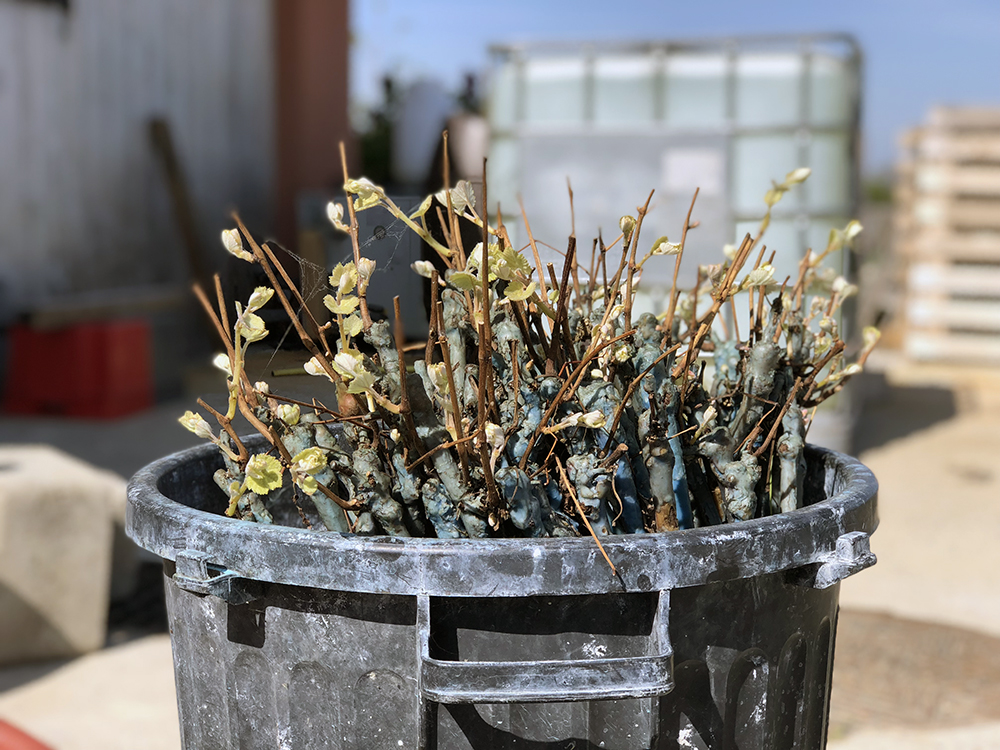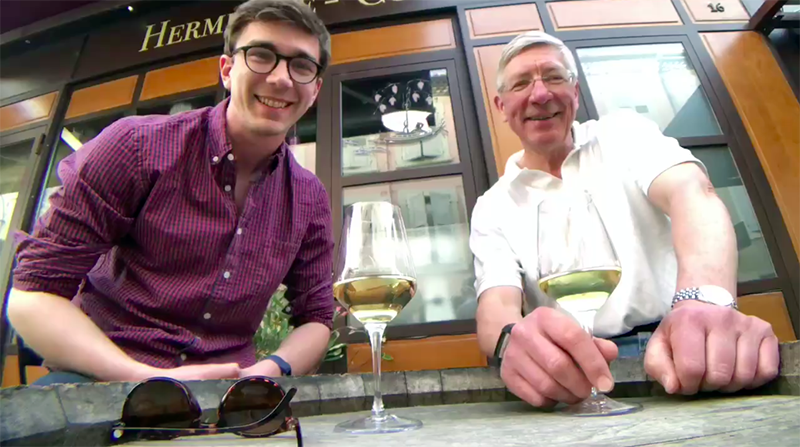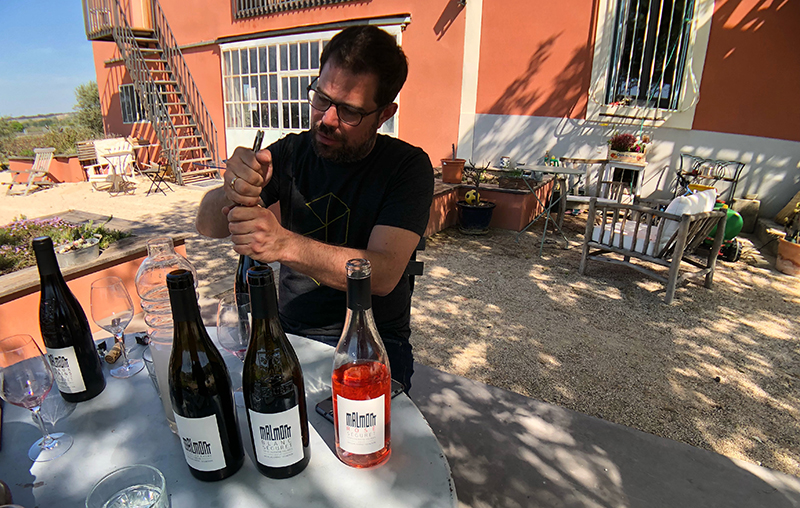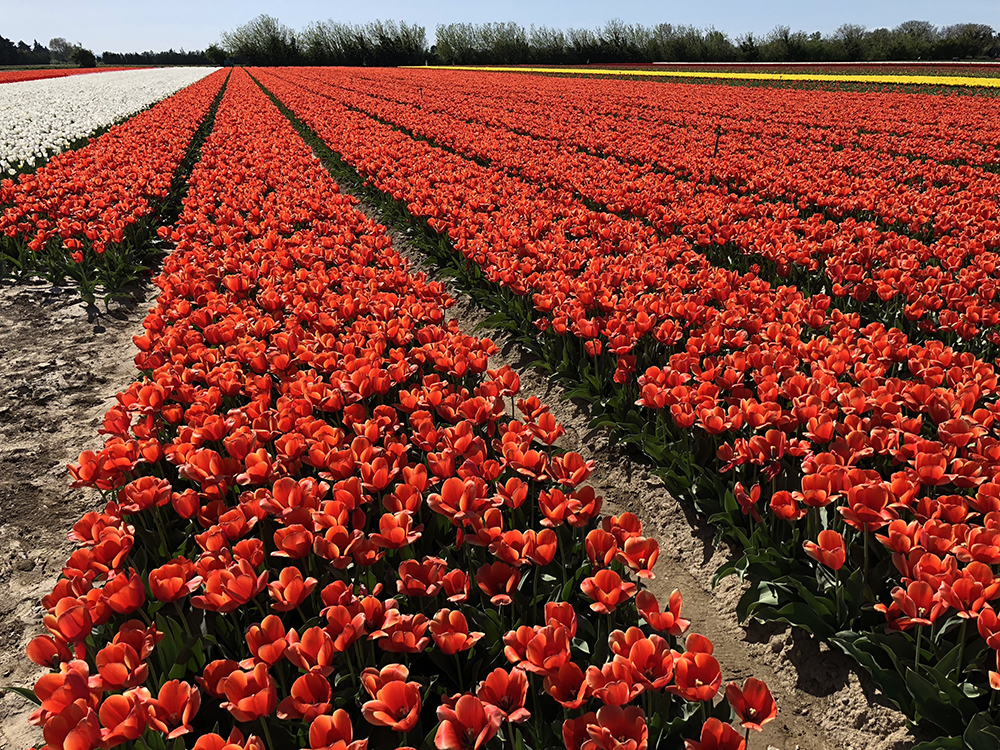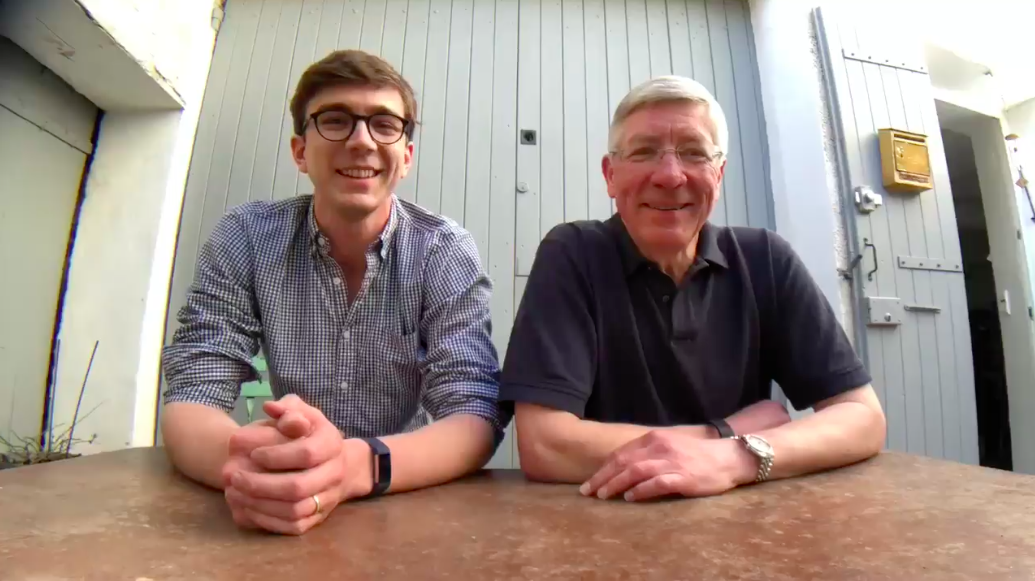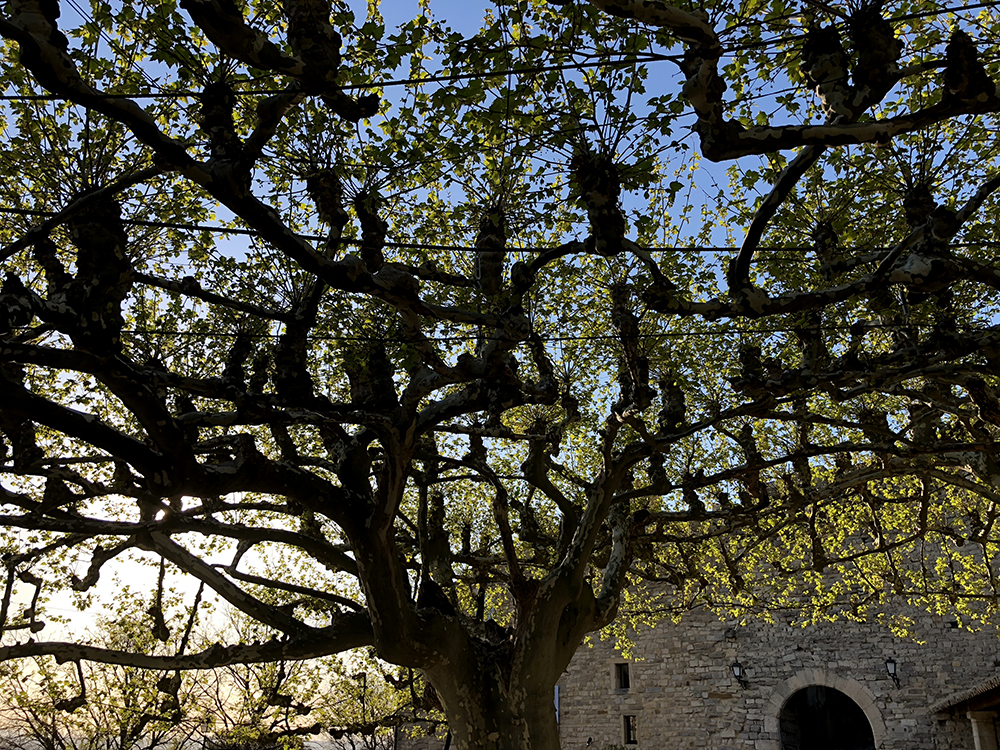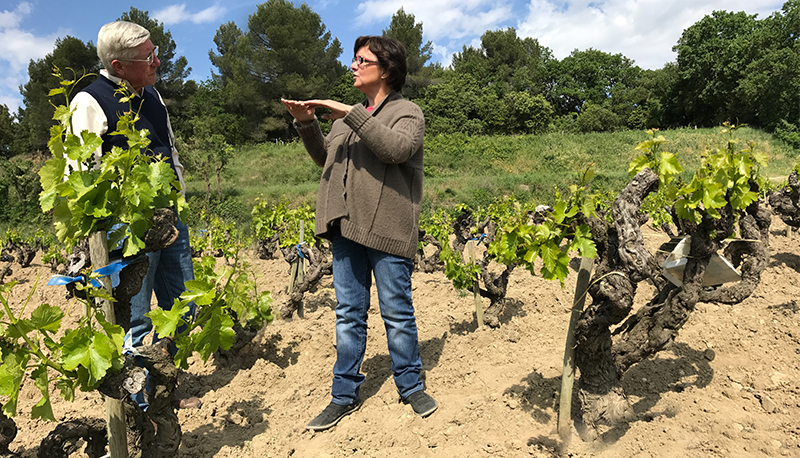Local Celebrities in Morey-St-Denis: 92 point 2015 Premier Cru
Morey-St-Denis is a tiny town. After our tasting yesterday at the Domaine Amiot, we strolled a few hundred yards down the town’s main street to lunch with Chantal and Jean-Louis. In a four minute walk we paused half a dozen times to exchange greetings with neighbors and friends, and then got waves and handshakes from nearly everyone in the restaurant. There may be only 680 inhabitants in the town, but everyone knows the name Amiot.
“Seductive,” “Utterly Delicious” 2015 White Burgundy from Michel Gros.
Yesterday afternoon we visited Michel Gros, our best known winemaker for Côte de Nuits reds. We barrel-tasted his 2016s, which are exceptionally good — this vintage will be far better than critics’ early predictions. At the end of a long tasting, Michel poured us tastes of his only white wine, from the Hautes-Côtes de Nuits, in both 2015 and 2016.
Weeknight 2015 Premier Cru Red Burgundy: Charming and Affordable
The 2015 reds continue to be the favorite child here in Burgundy. The wine lists of the local bistros and restaurants are bursting with juicy, delicious 2015s, and there’s little left at the domaines.
Vibrant, Inky, and Rich: Extraordinary 2015 Northern Rhône Syrah. $25
We visited Denis Basset yesterday at his Domaine Saint Clair outside Tain l’Hermitage. He’s a friendly, energetic winemaker making truly excellent wines. (They’re a lot of flavor for 9:30 in the morning, but they wash the toothpaste right off your palate.)
Scenes from a Tasting Trip: April 18, 2018
. . For more travel photos, follow our Instagram (photos and stories). . .
“Outstanding” 2015 Rhône Blend: an Explosion of Springtime Flavor.
We spent an enjoyable few hours on Nicolas Haeni’s charming backyard terrace yesterday. Haeni runs the Domaine Malmont, a tiny source in the Southern Rhône whose entire winemaking operation fits inside a small garage attached to his house. Under clear skies and a warm Provencal sun we tasted through Malmont’s recent cuvées.
Scenes from a Tasting Trip: April 17, 2018
. . For more travel photos, follow our Instagram (photos and stories). . .
Scenes from a Tasting Trip: April 16, 2018
. . For more travel photos, follow our Instagram (photos and stories). . .
“Magnificent” New Very-Old-Vine Châteauneuf-du-Pape.
We arrived yesterday afternoon in Provence. It’s lovely here — the sun is warm, the light is crisp, and the wind whistles through the craggy olive trees. If we could bottle the feel of Provence and bring it back we certainly would. (Apologies to any readers who were at yesterday’s marathon — that last paragraph may have been painful.)


